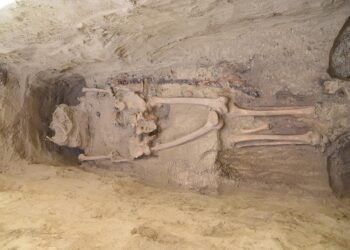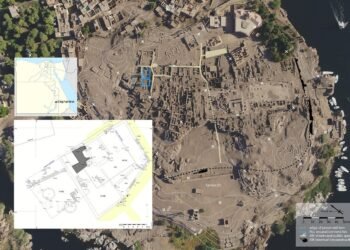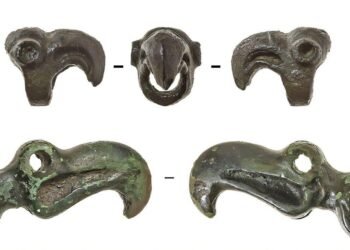Archaeologists from the Hubei Provincial Institute of Cultural Relics and Archaeology, in collaboration with the Xiangyang Municipal Institute of Cultural Relics and Archaeology, have made a significant discovery. They’ve uncovered an extensive cemetery nestled near Dengcheng village in Xiangyang, China, tracing its origins back to the Warring States period (475–221 BCE).

The archaeological dig unearthed a total of 176 tombs, the majority of which—174 to be precise—date from the Warring States period. Two tombs from the subsequent Han Dynasty (202 BCE–CE 9 and CE 25-220) were also discovered within the cemetery grounds.
One of the remarkable features of the site is the diversity of tomb sizes and structures. While most tombs are modest in size, nine medium-sized tombs, designated M1 to M9, feature sloping tomb passages. Among these, M1, M2, and M3 stand out as the largest, with rich burial offerings and intricate architectural details.
Inside tombs M3 and M4, archaeologists found traces of decayed coffins along with an array of funerary objects, including bronze tripods, pots, boats, swords, spoons, and horse bits. Additionally, several horse burials with chariots were discovered nearby.

The excavation yielded over 500 cultural relics, ranging from pottery sets to imitation copper ritual vessels and everyday items like plates, bowls, and combs. According to a press statement from the project, “This excavation provides a source of new materials for the study of funerary customs in the Xiangyang area during the middle and late Warring States Period, and also provides important physical data for the study of Chu culture.”
The location of Xiangyang Baizhuang, situated along the north bank of the Han River, holds historical significance dating back to the Western Zhou Dynasty when it was part of the state of Deng. Following the conquest of Deng by the state of Chu in 678 BCE, Deng County was established.
The meticulous excavation process, conducted in conjunction with a construction project, revealed the cemetery’s importance as a subsidiary burial ground during the Warring States period, likely associated with Deng County.






















